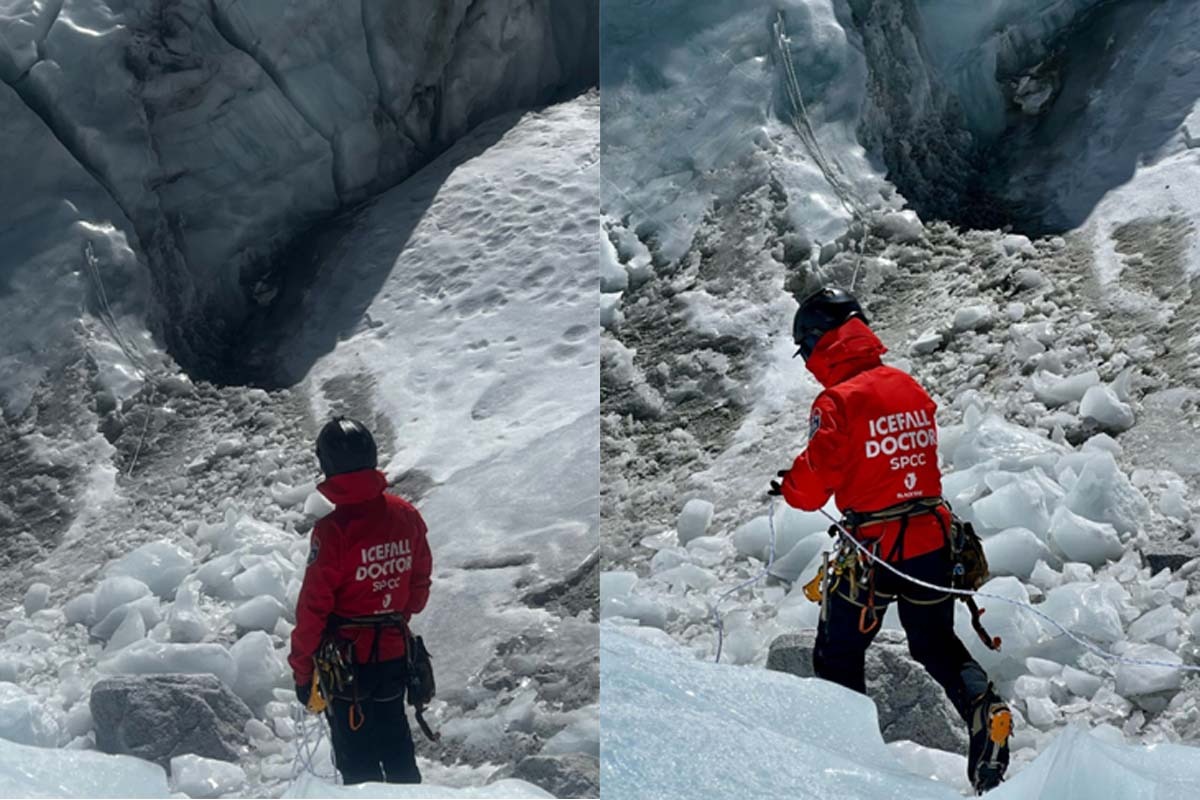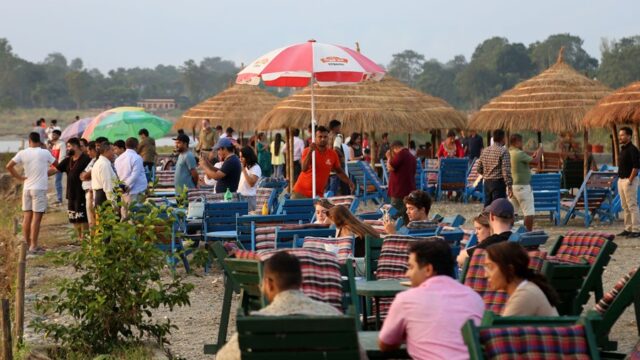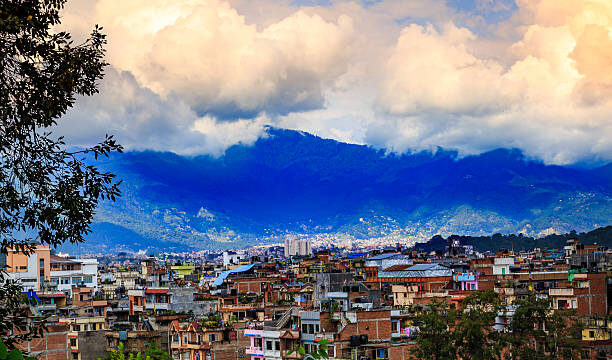With the arrival of spring, preparations for Mount Everest expeditions are in full swing. The Sagarmatha Pollution Control Committee (SPCC) has announced that a team of 10 experienced ‘Icefall Doctors’ has departed towards Everest Base Camp to ensure safe routes for climbers. This comes as part of ongoing efforts to clear and maintain the Khumbu Icefall route.
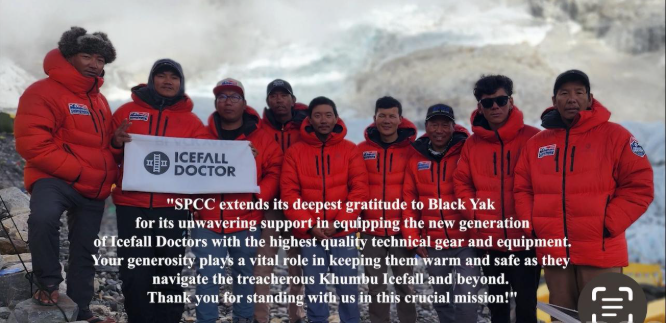
According to SPCC‘s Chairman, Lama Kaji Sherpa, the organization has been overseeing the construction and maintenance of the Khumbu Icefall trail. Sherpa explained that spring is considered the most favorable season for Himalayan expeditions, and as such, a team of skilled ‘Icefall Doctors’ with all necessary equipment has set out from Namche towards the Base Camp.

The team, led by Ang Serki Sherpa and Dawa Jangbu Sherpa, includes eight experienced Icefall Doctors and Base Camp Manager Chiring Tenzing Sherpa. Two separate groups have been formed, each tasked with different sections of the route. The team includes Dabanu Sherpa, Nima Tenzing Sherpa, Mingmagyalzen Sherpa, Daba Chiri Sherpa, Lakpa Sona Sherpa, and Tendu Sherpa, who are responsible for ensuring safe passage through the challenging terrain.
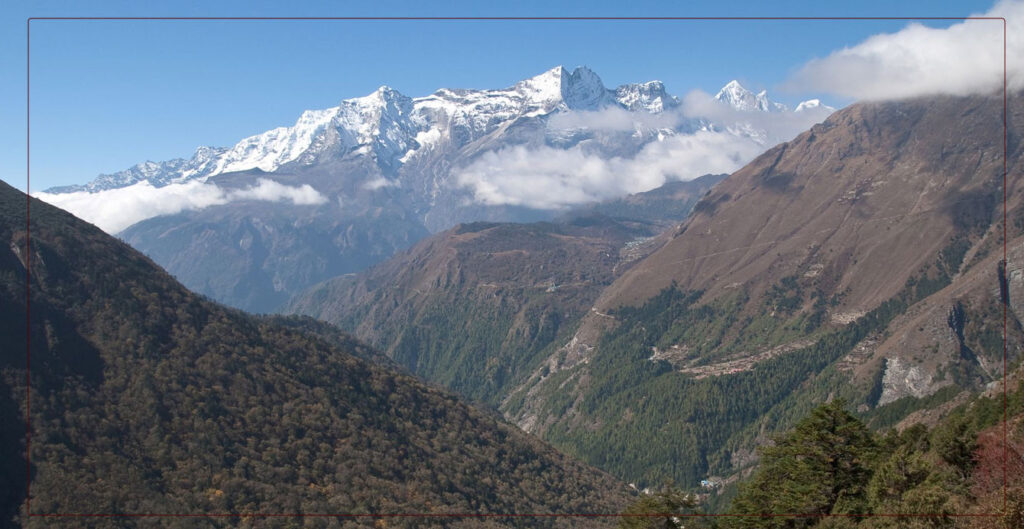
Since 1997, the Ministry of Culture, Tourism, and Civil Aviation’s Department of Tourism has entrusted SPCC with the responsibility of developing and maintaining the Khumbu Icefall route. The path is one of the most perilous sections of the Mount Everest climb, fraught with risks from massive snow blocks, crevasses, and avalanches. The Icefall Doctors’ task is critical, involving the installation of ropes, placing ladders in risky areas, and stabilizing unstable ice structures.
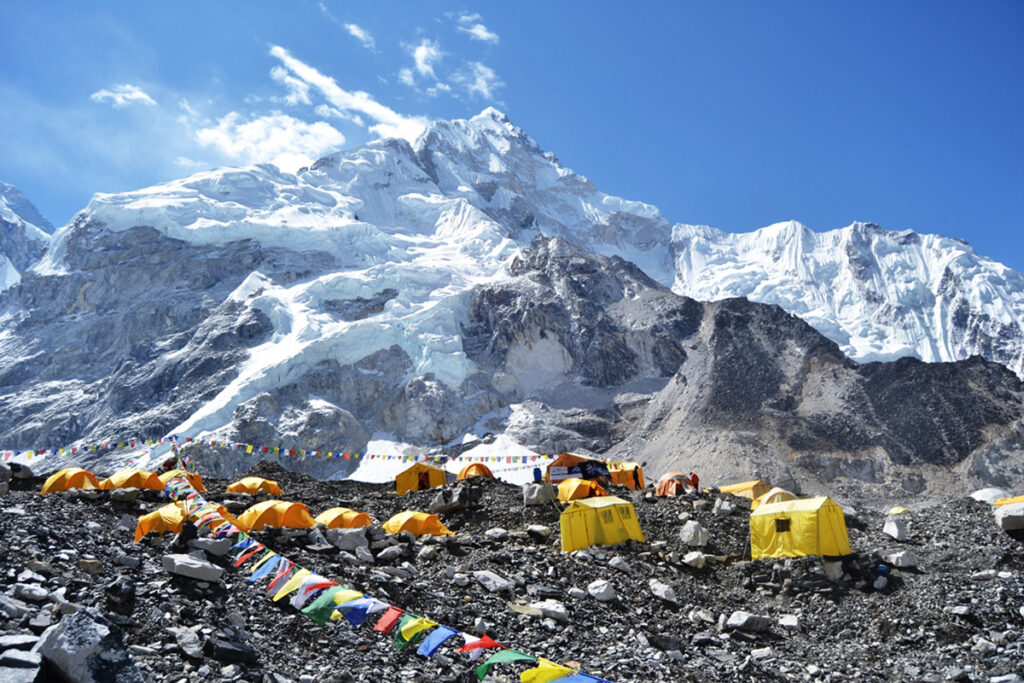
Traditional Rituals and Practices Before Construction
The construction of climbing routes follows traditional methods, with careful consideration of timing. SPCC members noted that before any route construction work is done, a special prayer ceremony is conducted, as per Buddhist traditions. Local Lama Gurus perform the rituals, seeking blessings from the mountain gods for a safe and successful climbing season. Only after these prayers are performed and the divine favor is sought, do the Icefall Doctors proceed with their work in the dangerous Icefall area.

The planning of the route is also guided by astrological signs, and the work proceeds only when it is deemed auspicious. According to Sherpa, this practice has long been believed to ensure the safety of climbers.
Estimated Timeline and Permits for Climbers
The route to the second base camp is expected to take approximately 20 days to complete. However, this timeline could extend in the event of adverse weather conditions. Only once the route is completed up to the second base camp will commercial climbing teams be permitted to begin their ascent.

SPCC collects a fee of USD 600 from each foreign climber, which is used for route construction, maintenance, and environmental conservation activities. The committee is also responsible for monitoring the environmental condition of the area and ensuring that climbers adhere to sustainability practices.
The Icefall Doctors play a pivotal role in ensuring the success of each expedition. Their tasks include building snow bridges, marking safe paths for climbers, and establishing essential infrastructure in high-risk areas. As Sherpa stated, “Without them, it would be impossible for climbers to succeed in their mission. We handle all the work of path building and cleanliness. According to our agreement with the Ministry of Tourism, we are fulfilling our duties. The fees we collect are the primary source of our income.”
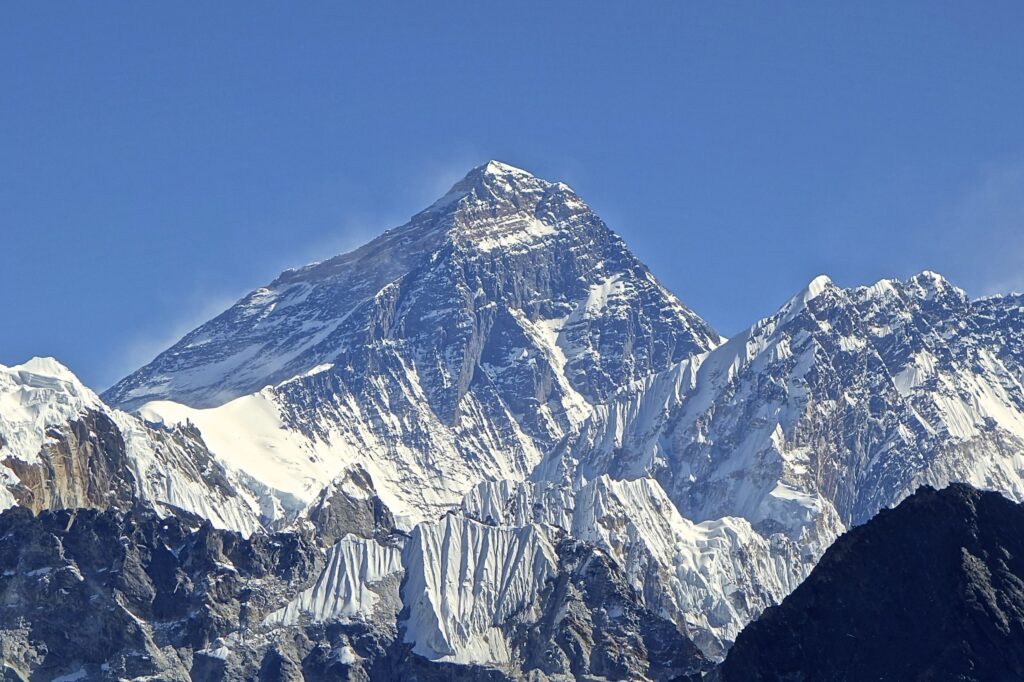
Mount Everest Expedition Preparations at Full Throttle
As spring progresses, preparations for Everest climbs have intensified, with all aspects of climber safety being prioritized. SPCC’s active involvement also extends to environmental preservation efforts. While the exact number of climbers expected to summit Everest this season has not yet been confirmed, past trends suggest a significant influx of climbers.
Tourism entrepreneur Bal Bahadur Darnal expressed optimism, stating that favorable weather conditions could lead to a highly successful season. “We are expecting a large number of climbers this year as well. With the construction of safe routes, cleanliness efforts, and environmental protection, we are preparing for a successful season,” he noted.
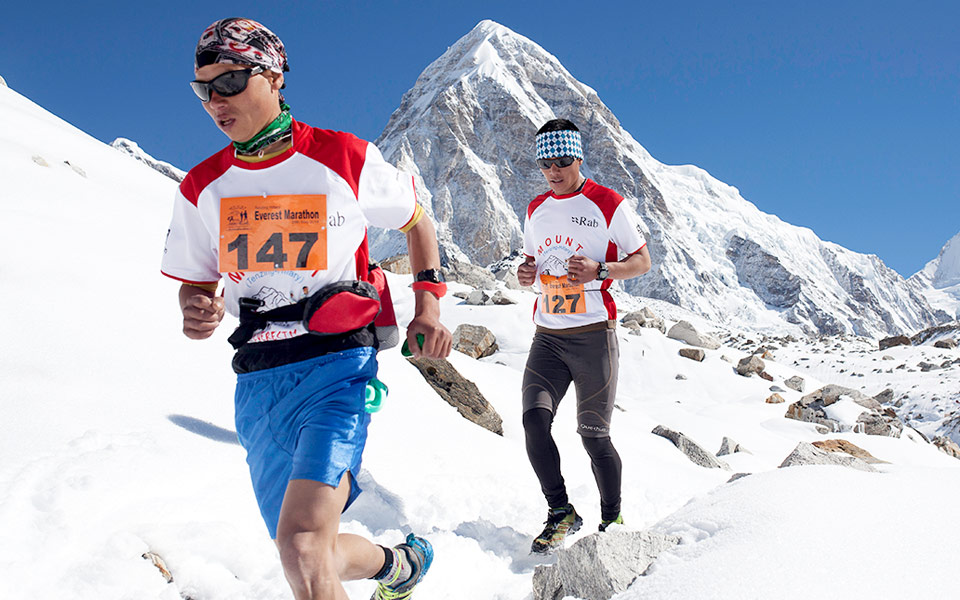
In terms of infrastructural readiness, all necessary equipment, food supplies, and communication facilities are being made available from the Base Camp upwards. Local Sherpa guides have been given special training to ensure their readiness for the season. Moreover, plans for the long-term preservation of the Himalayan environment are being put forward, with policies and action plans focused on sustainable tourism and environmental conservation.
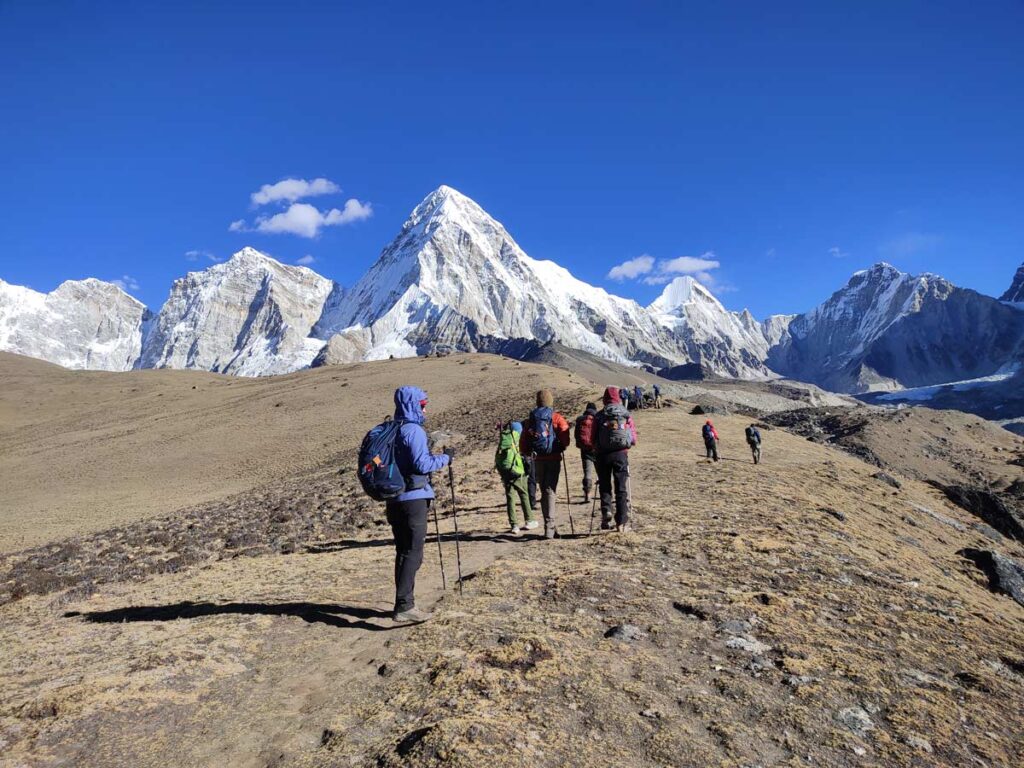
With the combined efforts of SPCC, local Sherpas, and government authorities, preparations for the spring Mount Everest season are proceeding smoothly. Safety remains the highest priority, and extensive work on the Icefall route is being carried out to ensure that the expeditions can proceed with minimal risk. As climbing teams prepare to make their way up the world’s tallest peak, the season is expected to bring both challenges and triumphs. The collaborative efforts of all involved show a dedication to preserving the majestic mountain while ensuring the safety and success of those who come to conquer it.
